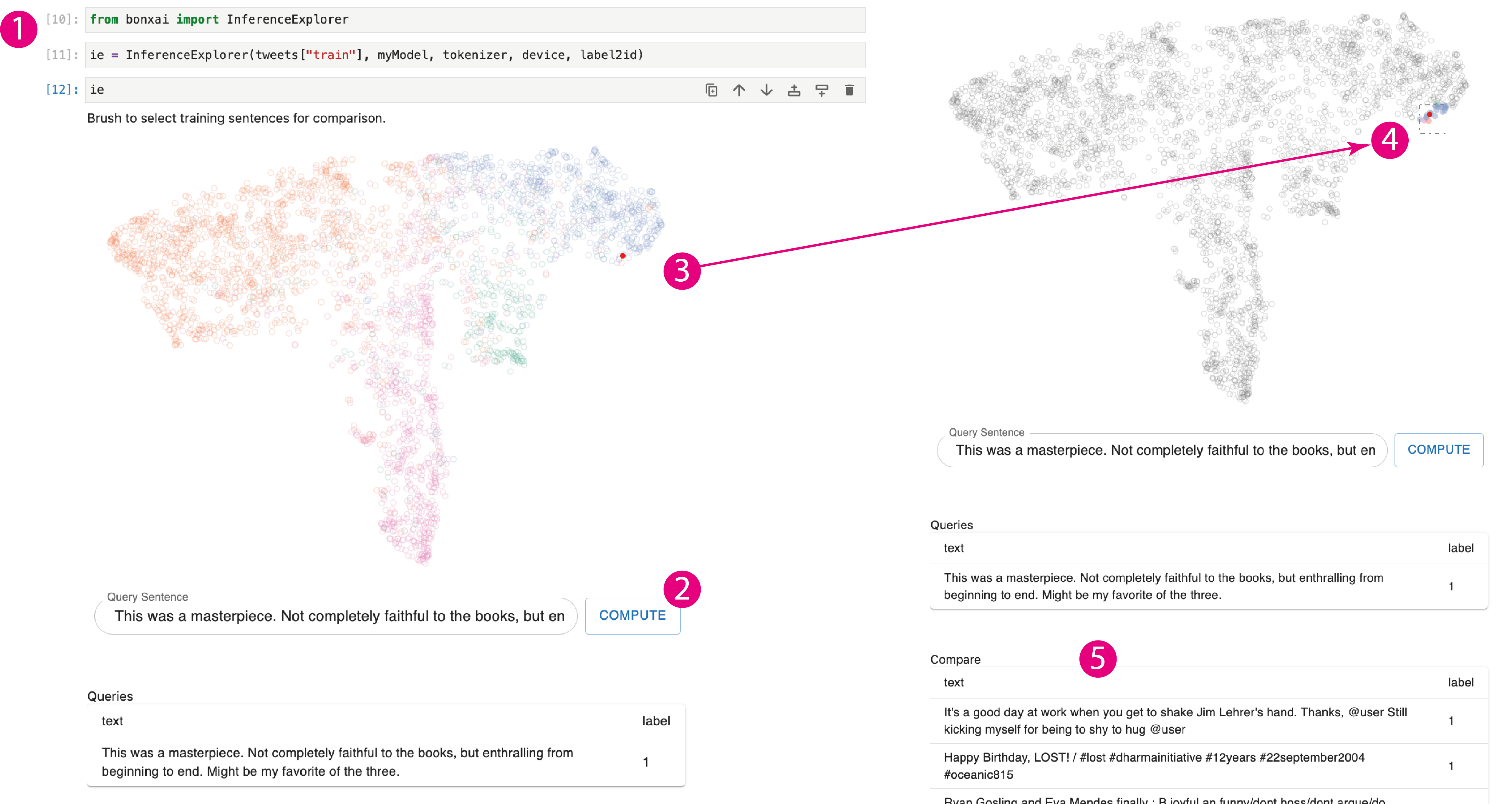Abstract
Citation
Materials

Explainable AI (XAI) tools represent a turn to more human-centered and human-in-the-loop AI approaches that emphasize user needs and perspectives in machine learning model development workflows. However, while the majority of ML resources available today are developed for Python computational environments such as JupyterLab and Jupyter Notebook, the same has not been true of interactive XAI systems, which are often still implemented as standalone interfaces. In this paper, we address this mismatch by identifying three design patterns for embedding front-end XAI interfaces into Jupyter, namely: 1) One-way communication from Python to JavaScript, 2) Two-way data synchronization, and 3) Bi-directional callbacks. We also provide an open-source toolkit, bonXAI, that demonstrates how each design pattern might be used to build interactive XAI tools for a Pytorch text classification workflow. Finally, we conclude with a discussion of best practices and open questions. Our aims for this paper are to discuss how interactive XAI tools might be developed for computational notebooks, and how they can better integrate into existing model development workflows to support more collaborative, human-centered AI.